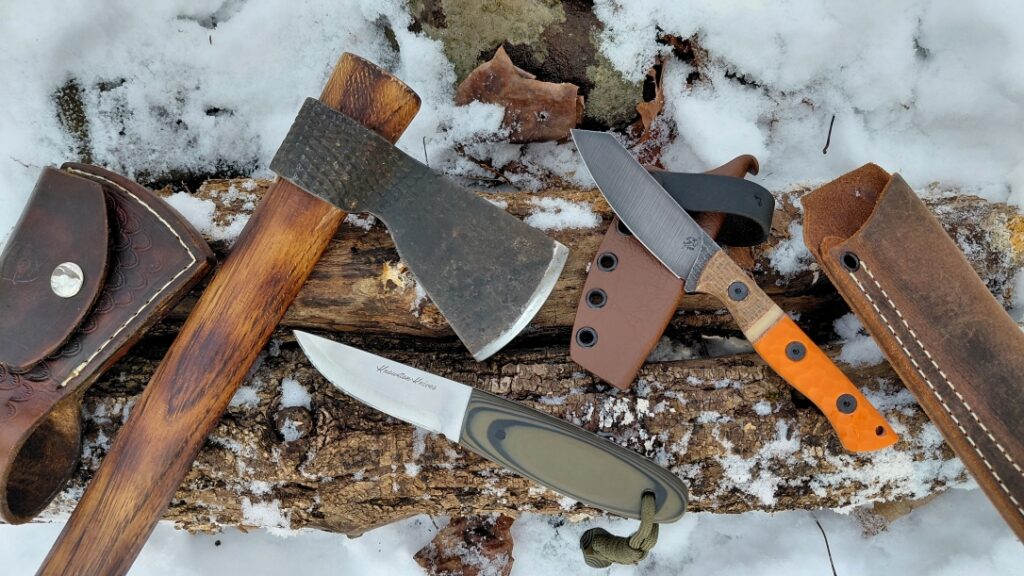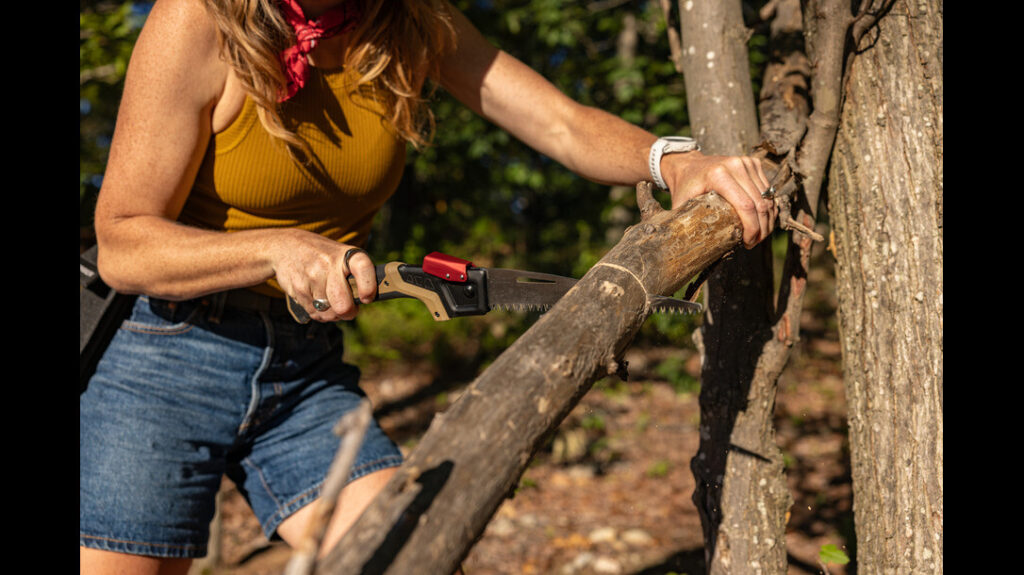One of my favorite and often overlooked rifles on the market is IWI’s Tavor. I like the feel, balance and accuracy of the Tavor. I have been shooting it for over three years and it has proven itself to be a helluva firearm. It has been used in three gun matches all over the country and it has never let me down.
Originally this rifle was built to be a rifle that can meet the Israeli Defense Force whether the troops are operating in urban operations or open field. Mr. Zalman Shebs designed the Tavor in 1982 for the IDF to do this. To give the troops a compact carbine/rifle a bullpup design was settled upon. The original design was tested and refined until the Tavor was born. It was tested in the 90s into the early 2000s and in 2002 it entered service. It was fielded by the Givati Brigade for real world operational testing. In September 2003 the Tavor was given the green light and became the IDF Infantry’s standard issue rifle. The Tavor has seen use with military and police units worldwide in a number of configurations.
I chose the G18 for the 18″ barrel. The 1 in 7 twist gets the most out of the 69 grain bullets I planned to use for competition. The longer barrel would also allow the addition of a stock extension for a better more supportive grip.
Advertisement — Continue Reading Below
When the G18 arrived I was like a kid at Christmas. It was cool looking, handled nicely, pointed naturally and was something few others seem to have. The built-in back up sights pop right up out of the Picatinny rail and were well regulated. The Tavor stands out in a crowd, I never have to worry about which carbine is mine on the rack.
The one drawback to the Tavor was the trigger. While the 6 pound trigger was serviceable for simple center of mass hits, it hindered the true accuracy of this carbine. During initial testing of the Tavor, I had no problem getting 3 ½” groups at 100 yards but that was as good as I could get it to run consistently. I used the first red dot I could find, a well traveled EoTch. It worked well, but the three dot reticle is too busy for my taste. Improving the trigger would be something that had to be looked into.
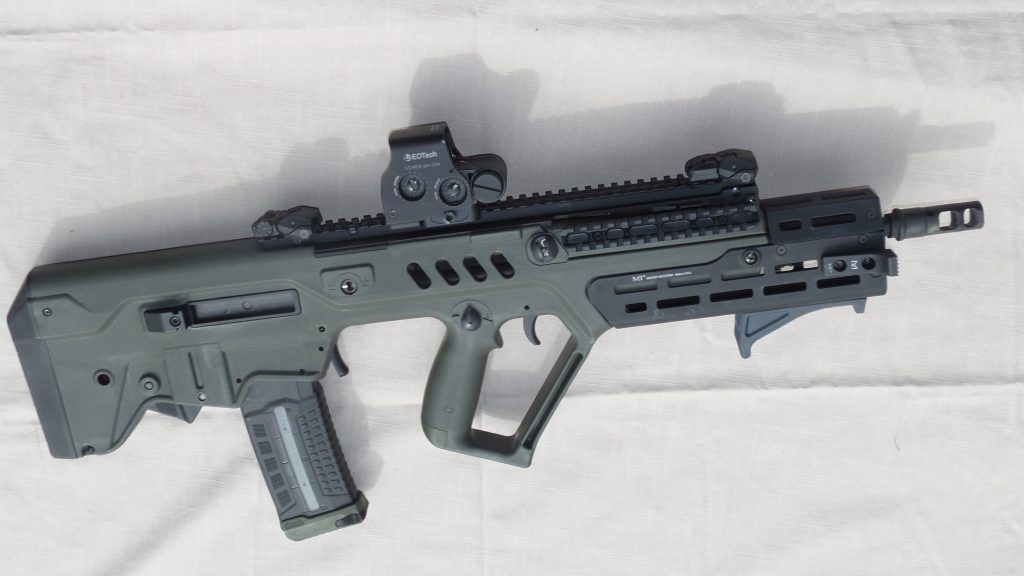
Advertisement — Continue Reading Below
The Tavor was ran flawlessly with any and all types of ammunition. While it fired everything and anything, it also had no favored magazine. I had magazines from Brownells, Hexmag, Lancer, Magpul, and Troy as well as very used GI magazines. I used Hexmags virtually the entire year; mainly the 2.0 version because it accepts stripper clips. The hex texturing makes it easy to “feel” the magazine when drawing it from behind a pistol mag. The HEX ID colored follower/floor plate makes it easy to find your magazine.
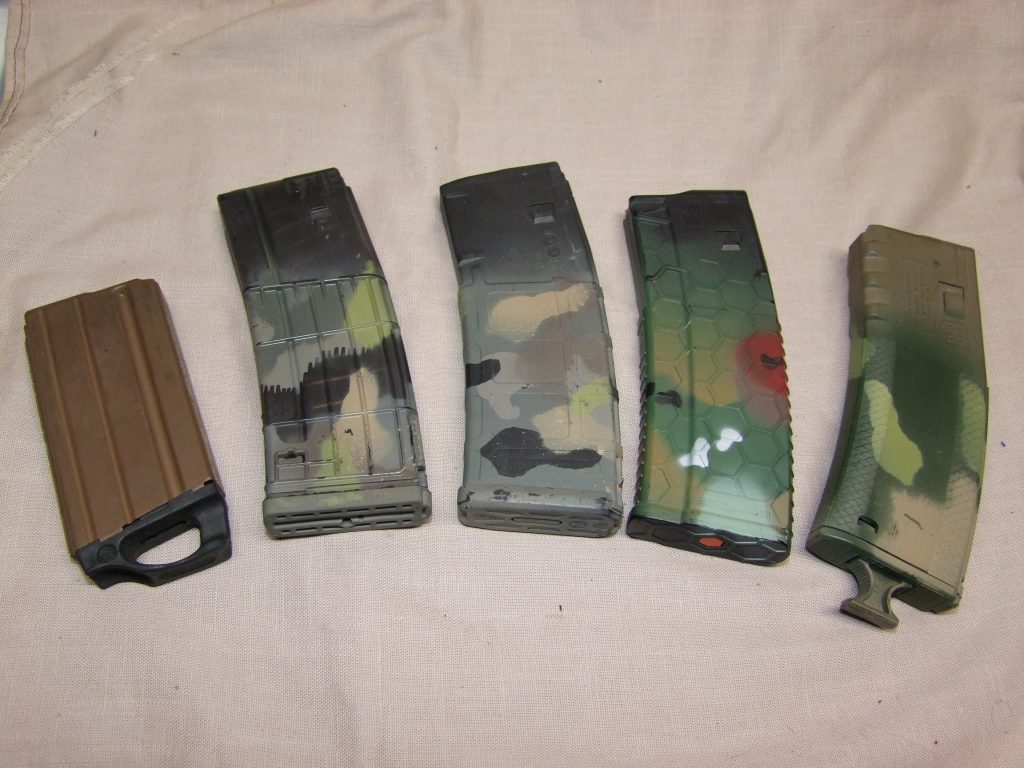
After installing the Timney trigger and before heading to the range I made a couple changes to the rifle. First I added a Surefire Brake/Suppressor Brake so I could mount my Surefire Mini and a Midwest Industries Tavor XL Handguard M-Lok, a Mapul Angled Grip and BUIS from FAB so they could be zeroed. The built in sights are only have vertical adjustment. This grip gives you a much better grip on this short carbine. These additions make the Tavor more suited for three gun applications, especially the Surefire brake which is very effective at reducing recoil and muzzle rise.
Advertisement — Continue Reading Below
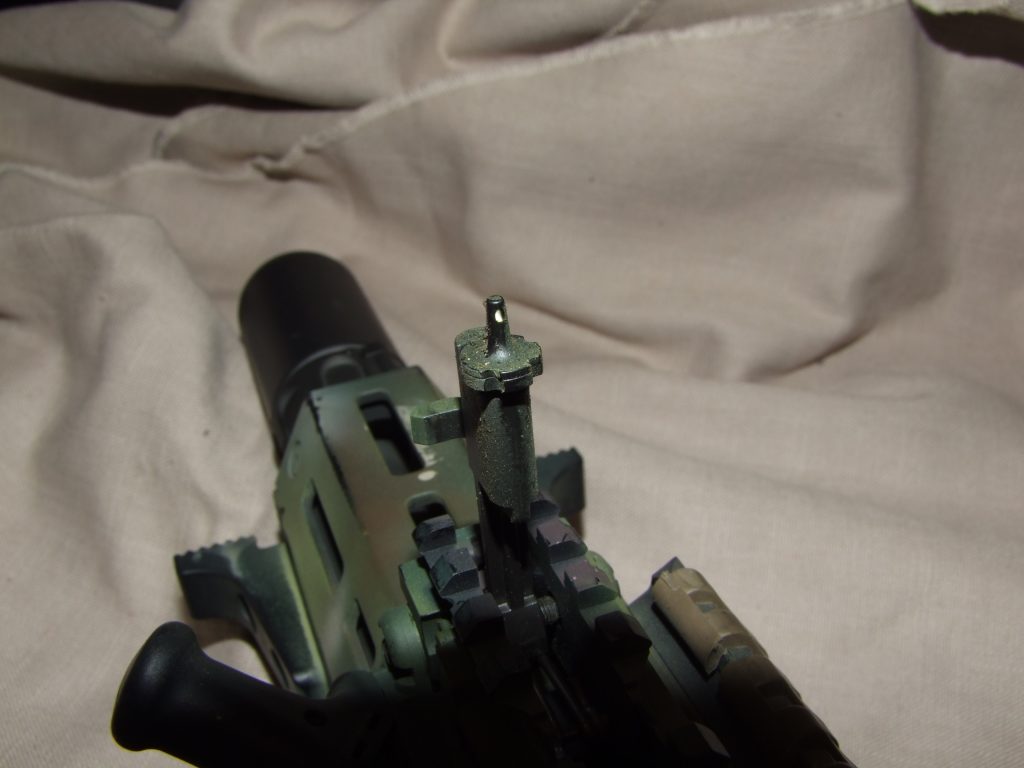
Once I had the Tavor ready to fire I mounted a Truglo Tru-Brite 1-6X SCP Tactical Scope. This scope ships with a quick adjust throw lever and monolithic mount that gives you repeatable zero. The reticle is lighted red/green with a “PowerRing Duplex”. I found this scope to be sharp and clear allowing first shot hits out to two hundred yards; that’s the longest shot I have at my range. The optional color reticle comes in handy when going from the lushness of the northeast to the desert southwest. The SCP is one of the best values I have found for optics. Over the past year it has traveled the country from sea level to over a mile high and it maintained zero. At $270, you will be hard pressed to find a better value for the dollar on the market. Truglo’s optics have become a force to be reckoned with over the last couple of years.

Advertisement — Continue Reading Below
Accuracy testing of the Tavor’s was done with ammunition from Black Hills and Hornady. With a 1 in 7 twist, I wanted to use heavier loads because they carry better at longer ranges. I had bullet weights ranging from 62 grains to 77 grains. I zeroed the Tavor at 50yards (50/200), this zero works well for my needs, and my range is 200 yards long. In a few rounds I had the rifle grouping tight nearly one hole three shot clusters at 50 yards. At 100 yards groups averaged a hair over 1”and at 200 the groups were consistently less than 2 ½”. The best groups at 100 yards was ¾” and at 200 yards was 2” with with the 75 gr loads from BHA and Hornady.
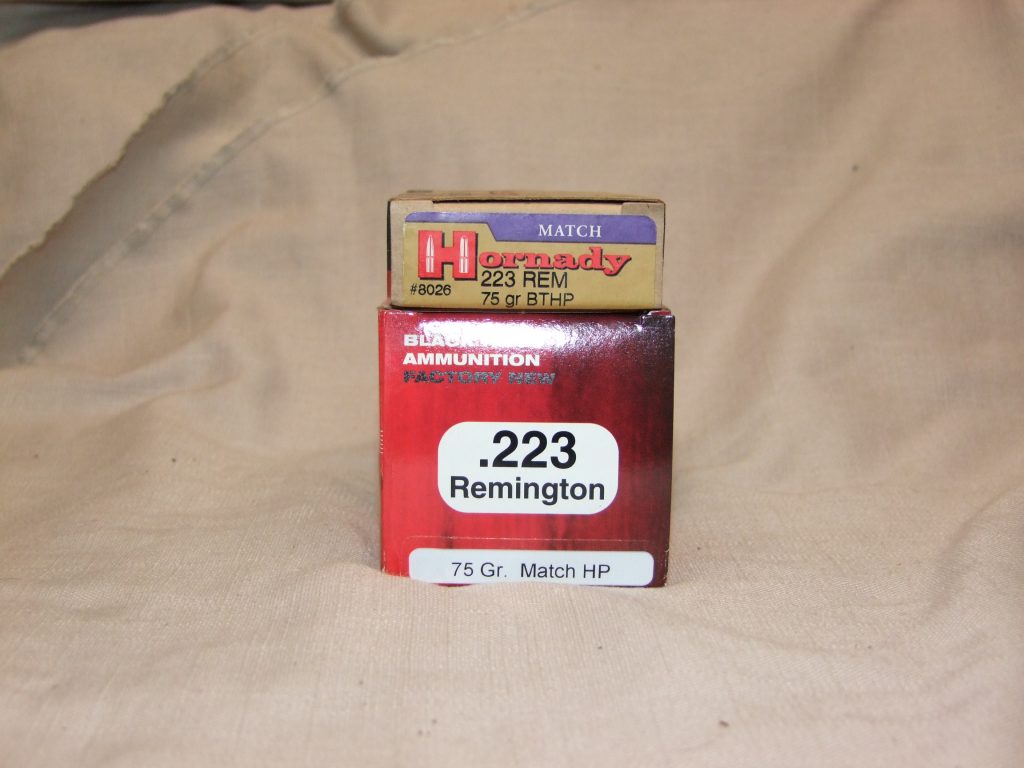
After testing the Tavor’s accuracy it was time to mount and zero the red dot I planned to use. I swapped out the EoTech that was used initially for a C-More; Tactical. This is a heads up display (HUD) optic that offers the best of tube and holographic dots. The biggest plus of HUD is you don’t get the “ghosting” from polarized shooting glasses you do with some holographic sights. I like the Tactical because of the “A2” style rear sight that is built into the rail that will co-witness with a back-up front sight. Like the Truglo, I zeroed this red dot at 50 yards. I was easily stacking bullets at 50 yards and maintaining sub 3” groups out to 200 yards. A lot of the spread was due to the 6MOA dot which starts to block out a lot of target area at distance. C-More now offers this sight with a 2MOA and 4MOA dots, which would improve accuracy at longer distances.
Advertisement — Continue Reading Below

While many will say this is not competition grade accuracy, the Tavor run with any type of ammunition and the accuracy is “good enough” for this beat-up old 59 year old. In practical terms from supported standing with a mixed magazine, 28 rounds of ammunition at 200 yards; every round rang the 15.5” Mule Kick from Birchwood Casey. If I can do that in a match, then I am happy.
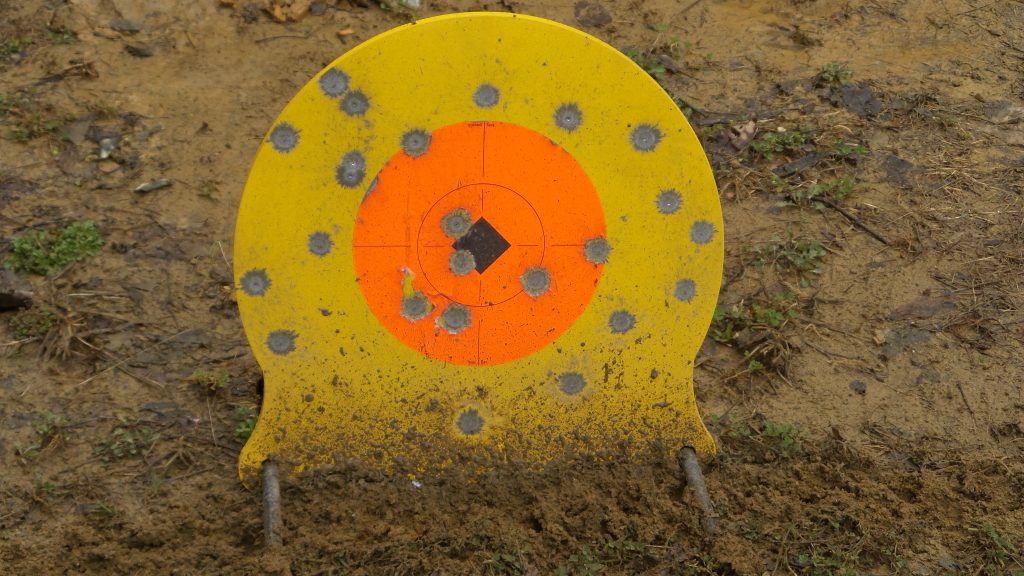
Advertisement — Continue Reading Below
Over the course of the last few years I fired nearly six thousand rounds through the Tavor in conditions ranging from monsoons at Rockcastle Pro/Am, to the windswept dusty desert of the Pro Gun Club in Las Vegas for the Surefire World Championships to the freezing rain of the MO State Multi-Gun. Through all of this all I did was lubricate the bolt carrier group and trigger group. The Tavor never missed a beat even in the downpours of Kentucky.

One feature I failed to mention is that it is fully ambidextrous firearm. The safety lever, charging handle and ejection port are easily moved to the left side of the carbine. The instructions included with the Tavor are easy to follow and well written. If you get turned around, youtube has numerous videos to help.
Advertisement — Continue Reading Below
This rifle has already proven itself in combat with the IDF, LEOs use it to protect many US cities and more shooters are using it for three gun competition. Even with its proven heritage American shooters do not favor the Tavor because of it’s magazine and bolt releases. Both of which are located in the butt of the Tavor. The magazine release is a lever protruding from the magwell. You release it with the heal of your hand. The bolt release is a large paddle that comes out of the bottom of the butt when the magazine is empty. Its location allows you to activate it as you insert a new magazine.
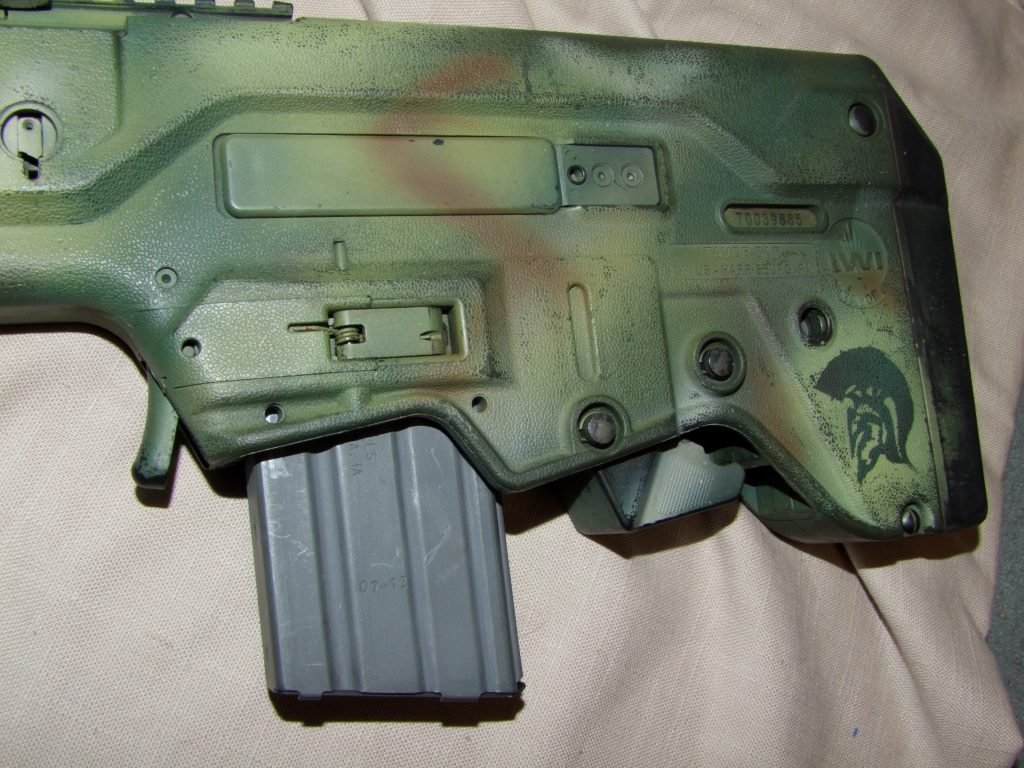
IWI realized they needed an Americanized Tavor. This led to the X95. The X95 has the magazine release located at the grip like an AR and the bolt release is now a paddle on the side of the butt. I have had limited range time with the X95, but enough to tell it handles like the Tavor and is just as accurate.
Advertisement — Continue Reading Below
Being content with my Tavor I will not be replacing it with an X95. I have shot a few X95s and it too is wicked accurate. Both models come chambered in .556 Rem, .300 Blk or 9mm and there are conversion kits allowing you to swap calibers. If you are looking for a compact rifle either the Tavor or the X95 will give you years of service.


